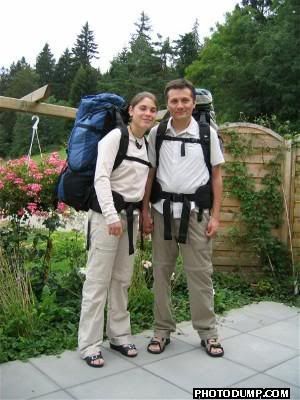Tuesday, November 16, 2004
Xi'An
Xi'An, besides being the booming capital of Shaanxi, is a city full of history.
The city grid is oriented after the cardinal point and the center is enclosed
by walls. The same disposition as in Pingyao, except Xi'An is about 100 times
bigger and modern high rise buildings took over the scenery.
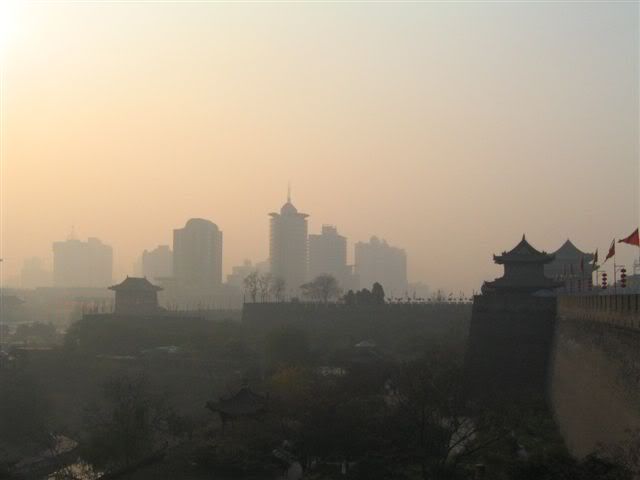
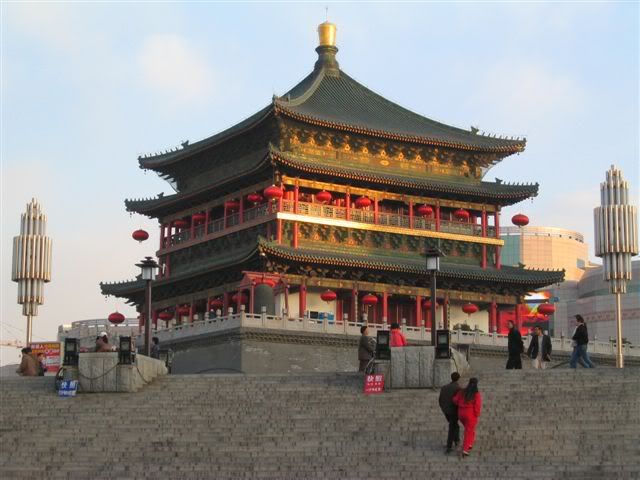
The terracota army, rediscovered in 1974 by a peasant drilling a well, is
certainly the most famous sight in the Xi'An area. The soldiers are supposed
to guard the tomb of emperor Qin Shi Huang who reunified China and standardised
the writing and measure units in the 3rd century BC. Unfortunately, the army
was badly damaged by fire and collapse of the pits in which there were buried.
But big efforts were done in restauration and the displays gives a good idea
of its past splendor.
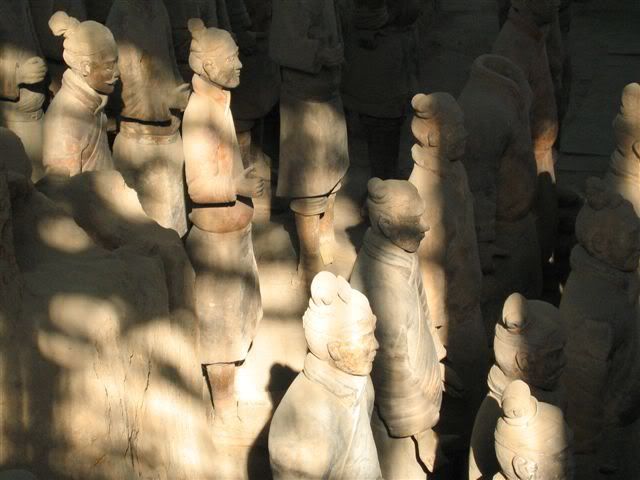
There is also very much to see in the city itself. But, as it was getting
cold, we only stayed 5 days there and had to be very selective.
The Beilin museum with its thousands of steles composing an archive of chinese
history and literature fetching back nearly 2000 years, the local shadow
puppet exhibition and the imposing Han Dynasty stone carvings, is one of
our personal highlights. At the back of the museum, prints are directly taken
from the steles, in the traditional way. And the surrounding streets are
packed with calligraphy shops and exhibits, pleasantly extending the visit
to the museum.
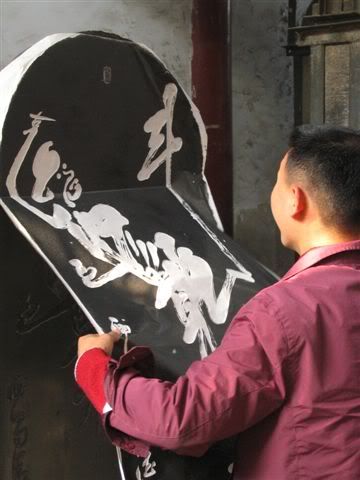
We also enjoyed the particuliar atmosphere of the lively muslim quarter,
with it's bazaar and food stalls. Oriental chants come out of the mosque,
which is the center of life for the 30'000 people of Xi'An's Hui minority.
The mosque looks very unusual, like a traditional chinese buddhist temple
with coranic verses written in arabic over the pillars and gates.

Hua Shan
This taoist sacred mountain, a 100km away from Xi'An, makes a good day-trip
to escape the smog and enjoy a piece of blue sky. We got to the park gates
by public bus. From there, a minibus takes most tourists to a cablecar 7
km away. The cablecar arrives below the north peak. To do all 6 peaks in
a day, this is the best option.
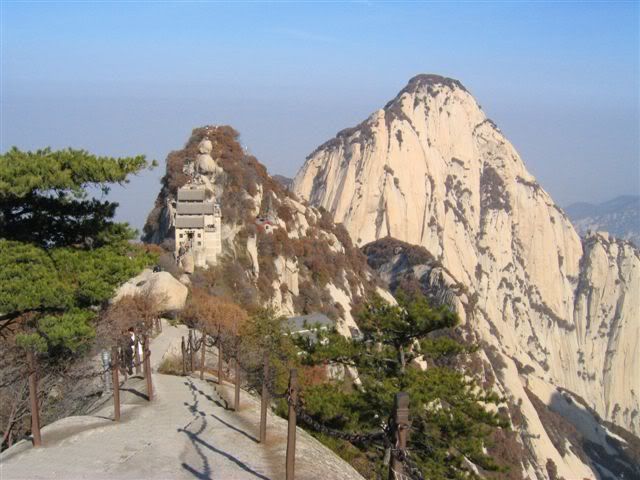
The peaks are supposed to represent a flower. The trails are mostly paved,
and can get very narrow at some places. As one could expect, the area near
the end station of the cablecar was quite crowded, but the rest was OK. Eventhough
the peaks are not so high (around 2200 m), the scenery is very impressive.
At some places, the cliffs are 1000 meters high.
The city grid is oriented after the cardinal point and the center is enclosed
by walls. The same disposition as in Pingyao, except Xi'An is about 100 times
bigger and modern high rise buildings took over the scenery.


The terracota army, rediscovered in 1974 by a peasant drilling a well, is
certainly the most famous sight in the Xi'An area. The soldiers are supposed
to guard the tomb of emperor Qin Shi Huang who reunified China and standardised
the writing and measure units in the 3rd century BC. Unfortunately, the army
was badly damaged by fire and collapse of the pits in which there were buried.
But big efforts were done in restauration and the displays gives a good idea
of its past splendor.

There is also very much to see in the city itself. But, as it was getting
cold, we only stayed 5 days there and had to be very selective.
The Beilin museum with its thousands of steles composing an archive of chinese
history and literature fetching back nearly 2000 years, the local shadow
puppet exhibition and the imposing Han Dynasty stone carvings, is one of
our personal highlights. At the back of the museum, prints are directly taken
from the steles, in the traditional way. And the surrounding streets are
packed with calligraphy shops and exhibits, pleasantly extending the visit
to the museum.

We also enjoyed the particuliar atmosphere of the lively muslim quarter,
with it's bazaar and food stalls. Oriental chants come out of the mosque,
which is the center of life for the 30'000 people of Xi'An's Hui minority.
The mosque looks very unusual, like a traditional chinese buddhist temple
with coranic verses written in arabic over the pillars and gates.

Hua Shan
This taoist sacred mountain, a 100km away from Xi'An, makes a good day-trip
to escape the smog and enjoy a piece of blue sky. We got to the park gates
by public bus. From there, a minibus takes most tourists to a cablecar 7
km away. The cablecar arrives below the north peak. To do all 6 peaks in
a day, this is the best option.

The peaks are supposed to represent a flower. The trails are mostly paved,
and can get very narrow at some places. As one could expect, the area near
the end station of the cablecar was quite crowded, but the rest was OK. Eventhough
the peaks are not so high (around 2200 m), the scenery is very impressive.
At some places, the cliffs are 1000 meters high.
